| Saint Martin's Cathedral |
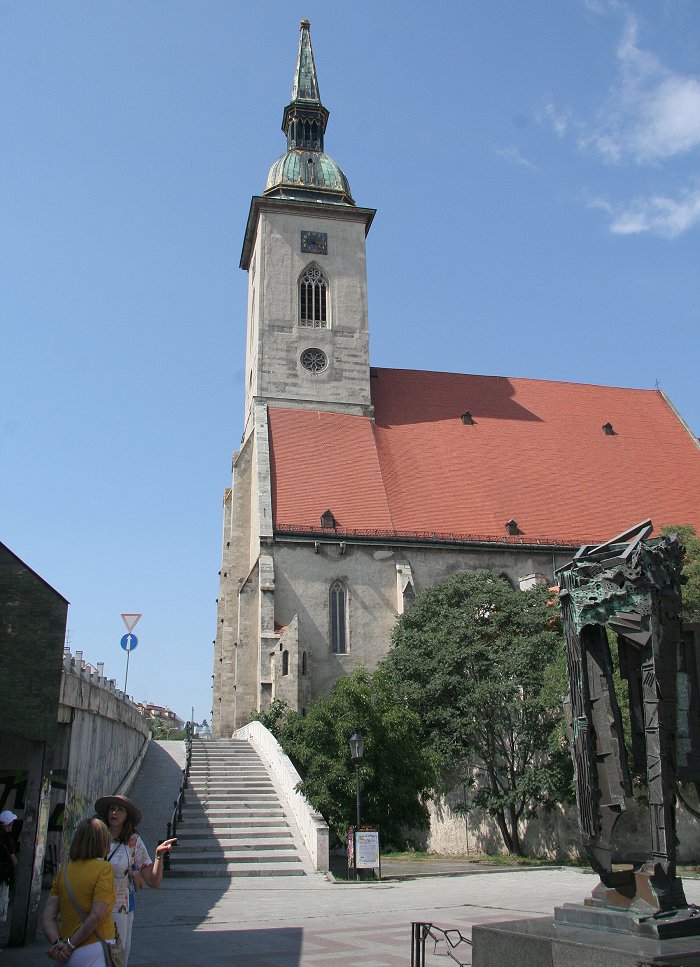 |
| Saint Martin's Cathedral |
 |
| St. Martin's Cathedral is located in Old Town Bratislava. This cathedral is one of Slovakia's oldest and is known for its role as a place of coronation for Hungarian kings. The site of St. Martin's Cathedral was used for religious purposes even before the construction of the current 14th-century cathedral. The cathedral was a part of the city's fortifications, acting as a section of the defensive wall. In the following centuries, Gothic and Baroque additions were added. However, the current style of the cathedral is Gothic despite remodeling in a newer style; the cathedral was damaged by fire and a major earthquake, and so its style was reverted back to the Gothic. |
| Inside
on the floor in front of the seating area of the church there is a thick-glass
covered opening to reveal old sculls below. The glass is part of the floor and it is a very strange feeling to walk above these sculls. The church was build over an old cemetery. |
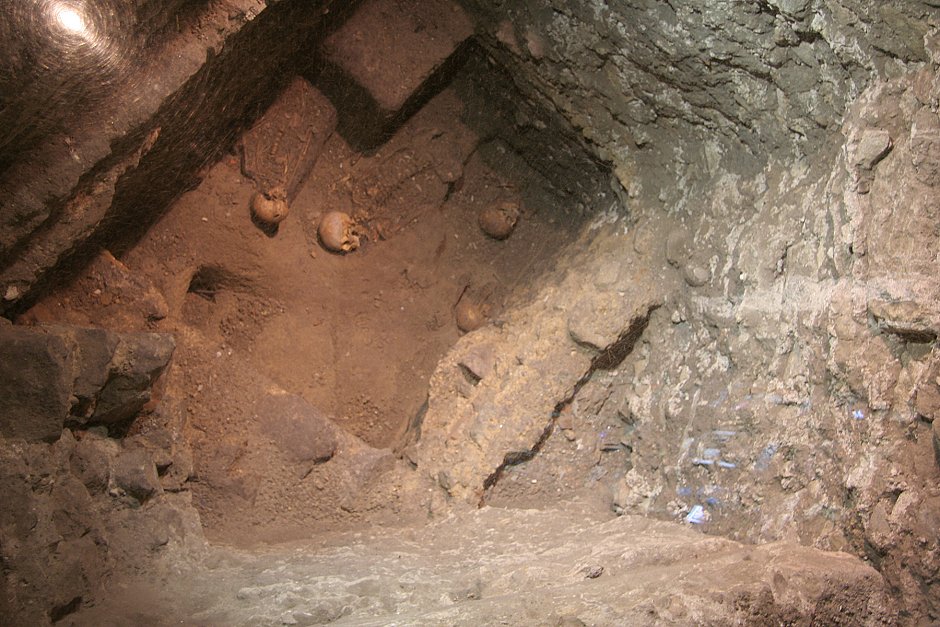 |
| More conventional part of the church. |
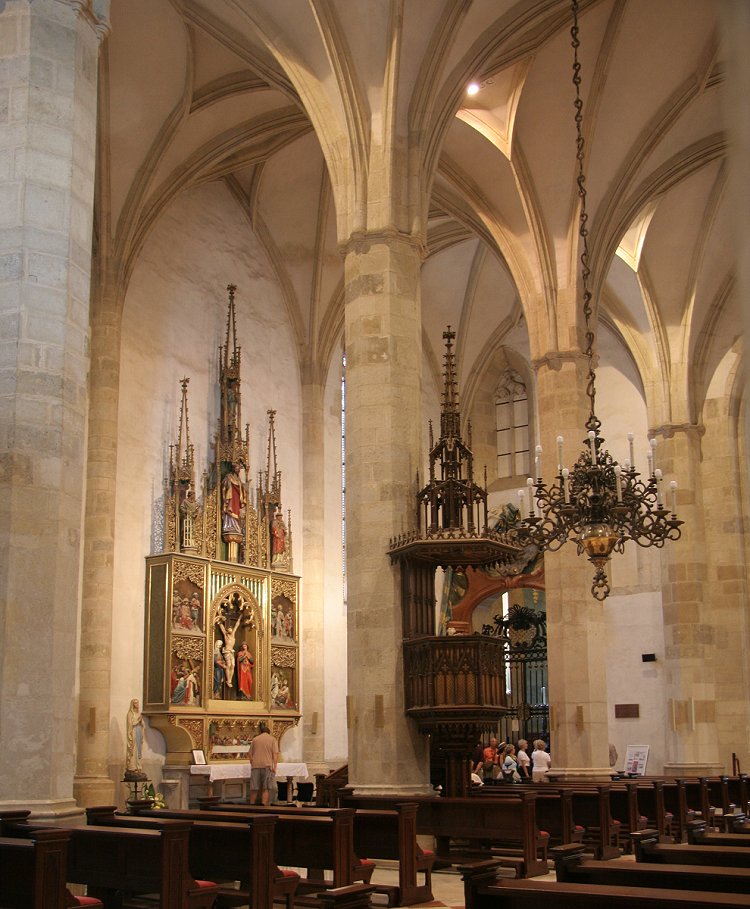 |
| Outside the church on the opposite side. Restoration is planned. |
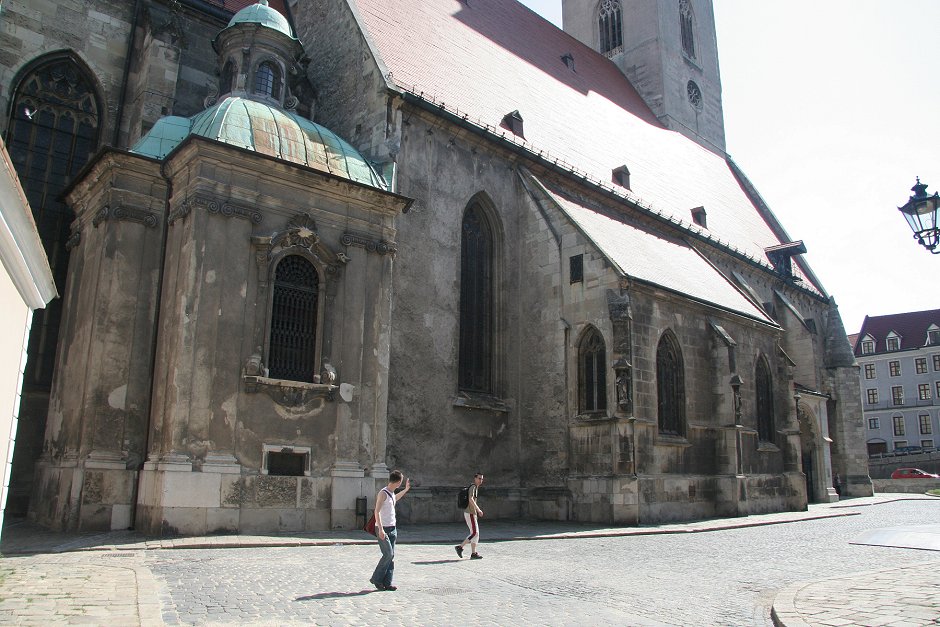 |
| Other
end of the church. Interior light comes from these narrow stained glass
windows, so I've used only one of my interior pictures. Note how massive the church is compared with the woman walking at right. A helicopter is needed to get a picture of the entire church. |
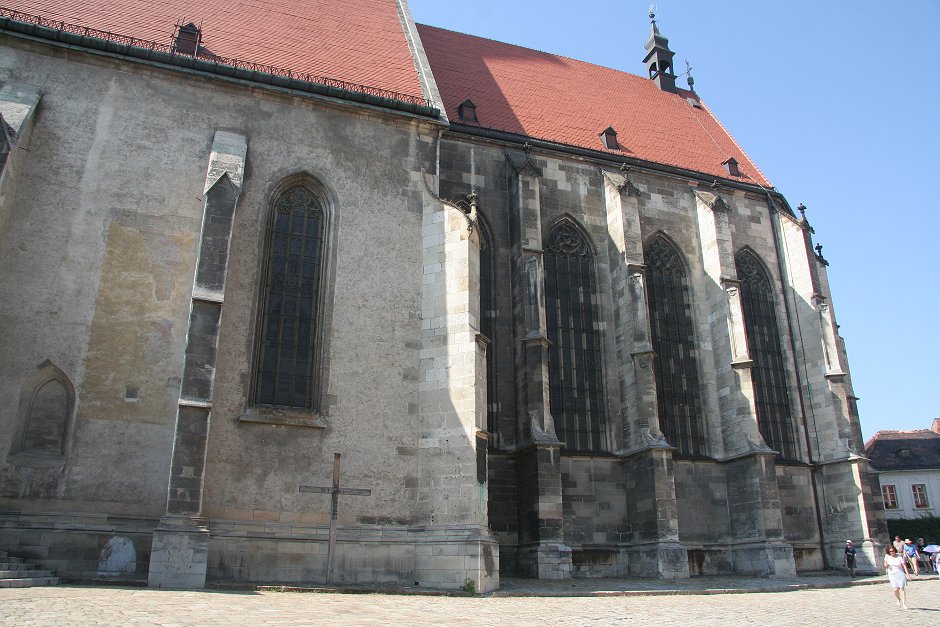 |
| The more global picture I had in mind, with Bratislava Castle in the background, taken from a top floor of a modern building. (Source) |
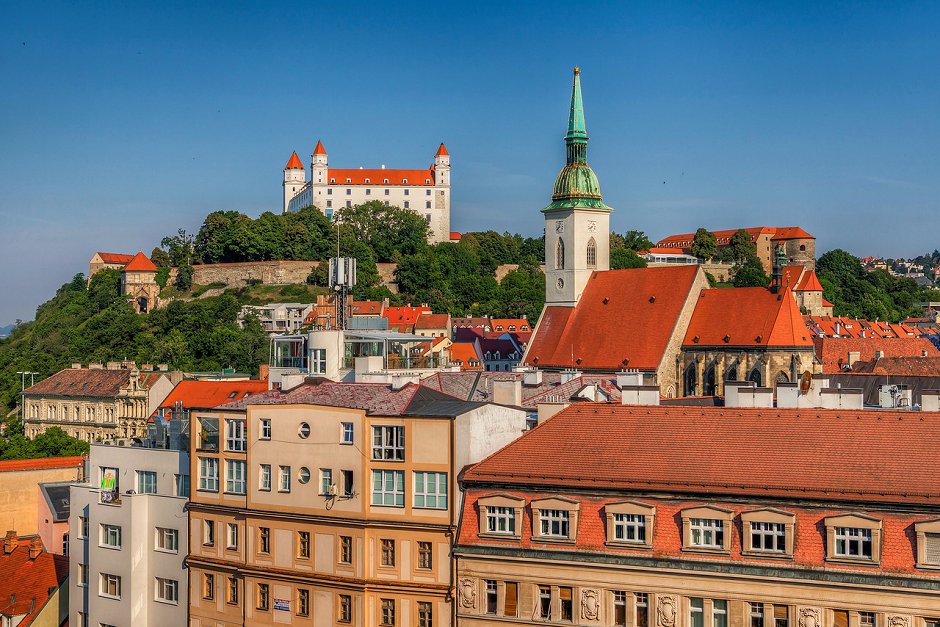 |
| Interesting apartment building not far away. |
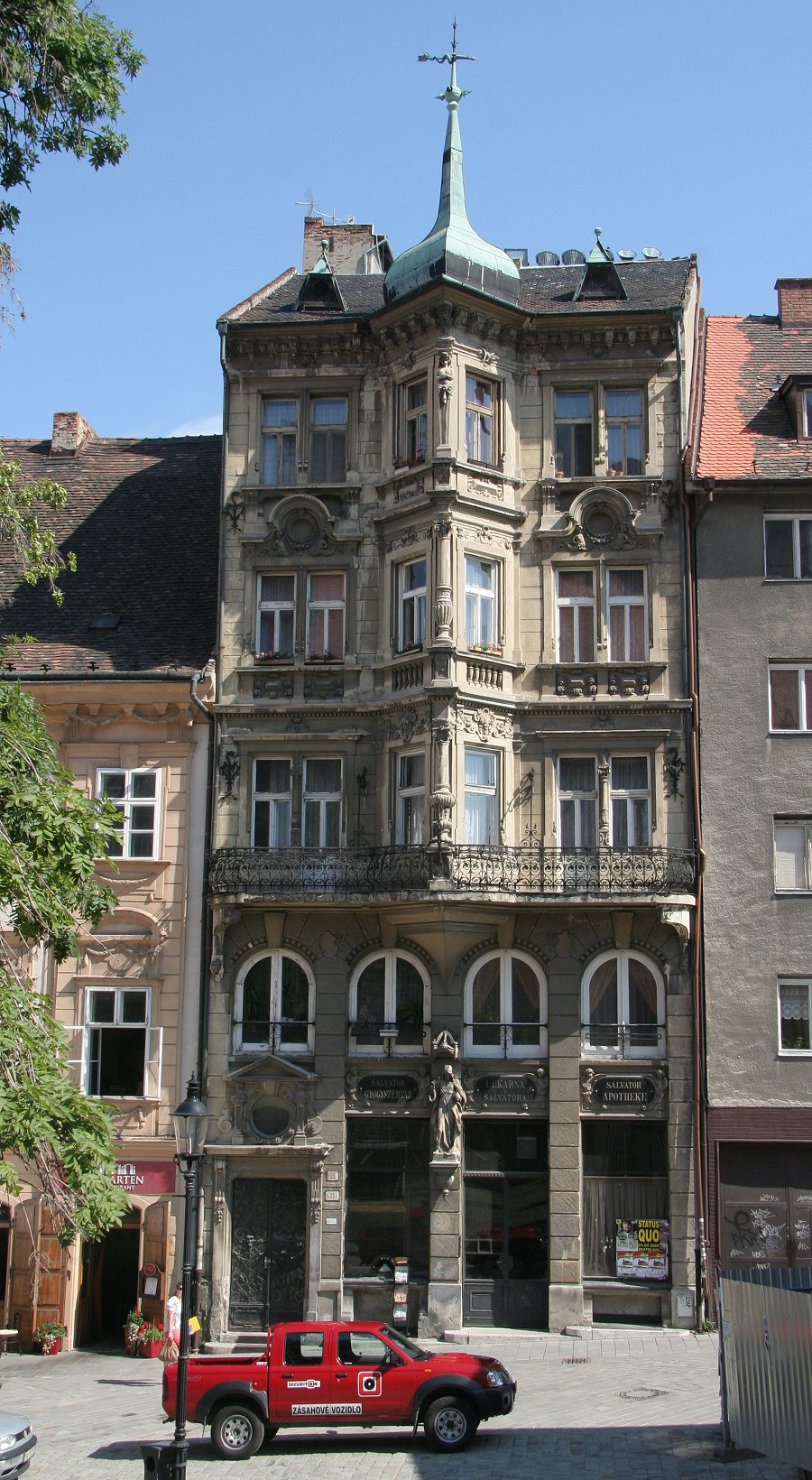 |
| We continue our walk through Old Town (Mary on far left). |
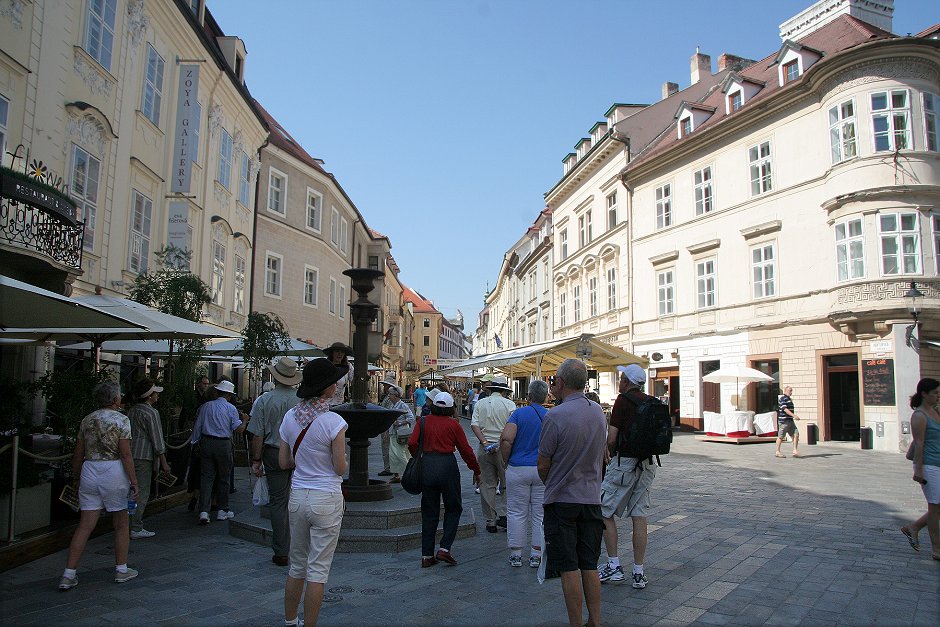 |
| Michael's Tower, telephoto. |
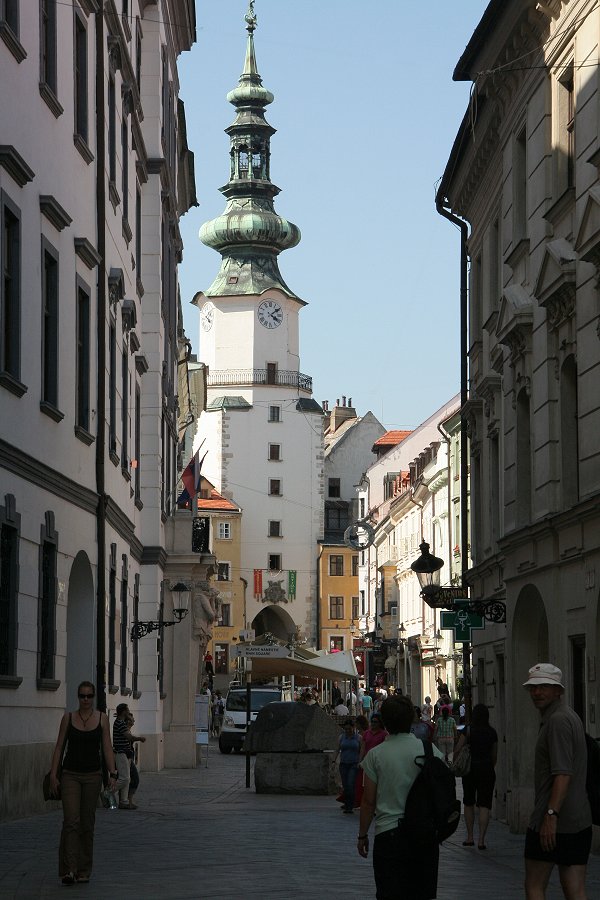 |
| Michael's Tower, wide angle view. |
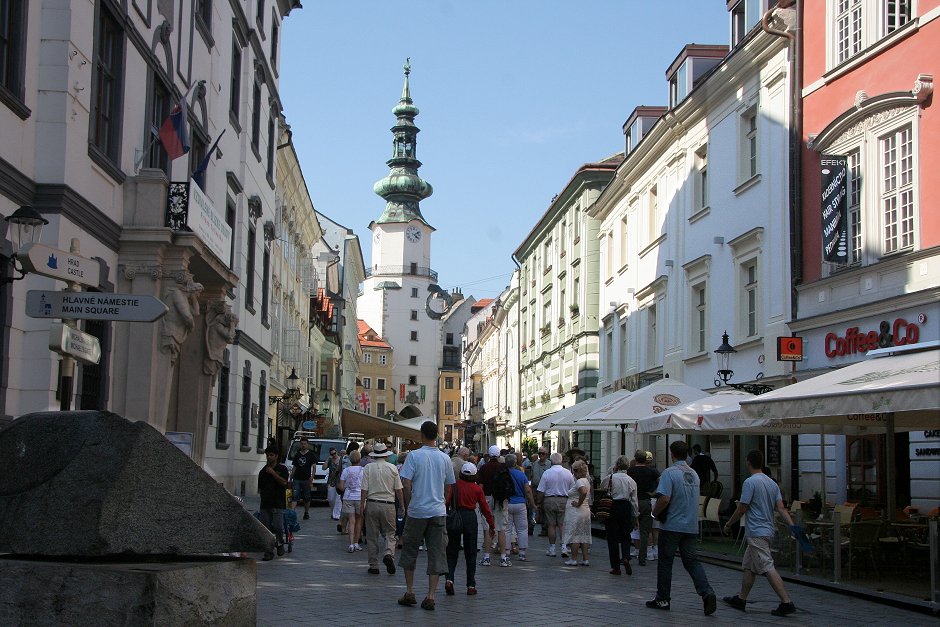 |
| Very unique old bus. |
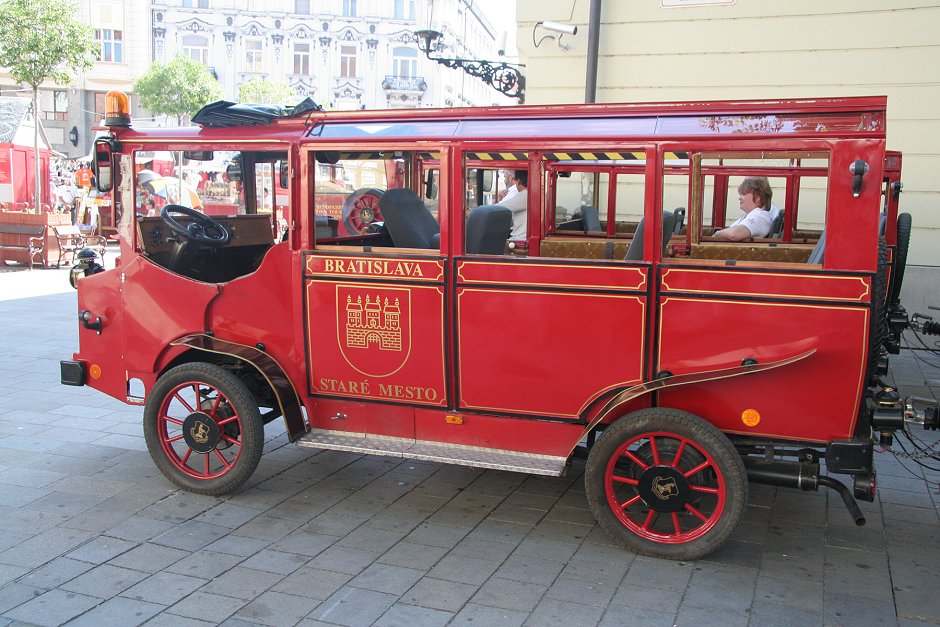 |
| And they string them together into a short train. |
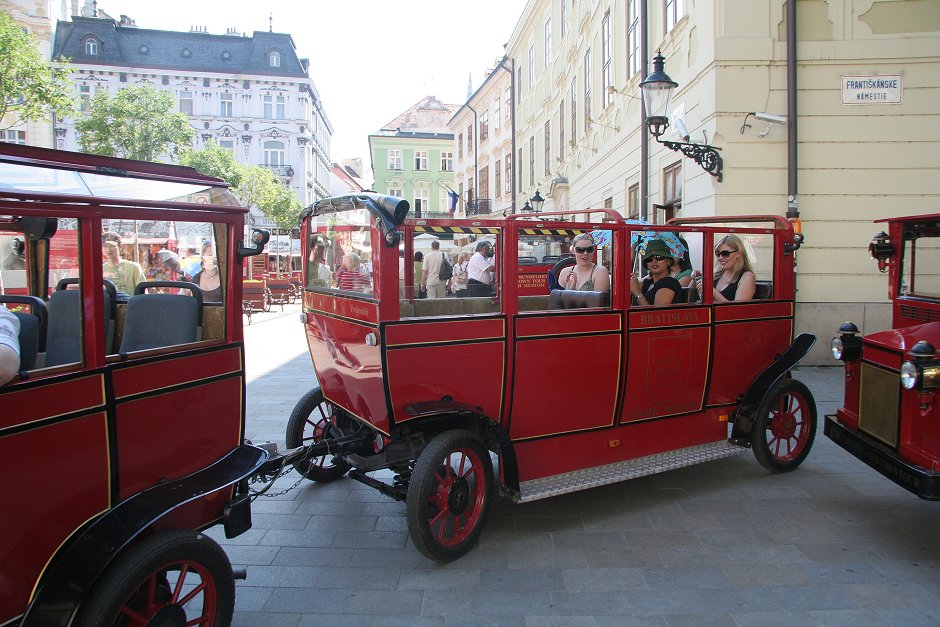 |
Old Bratislava, Slovakia City Hall
|
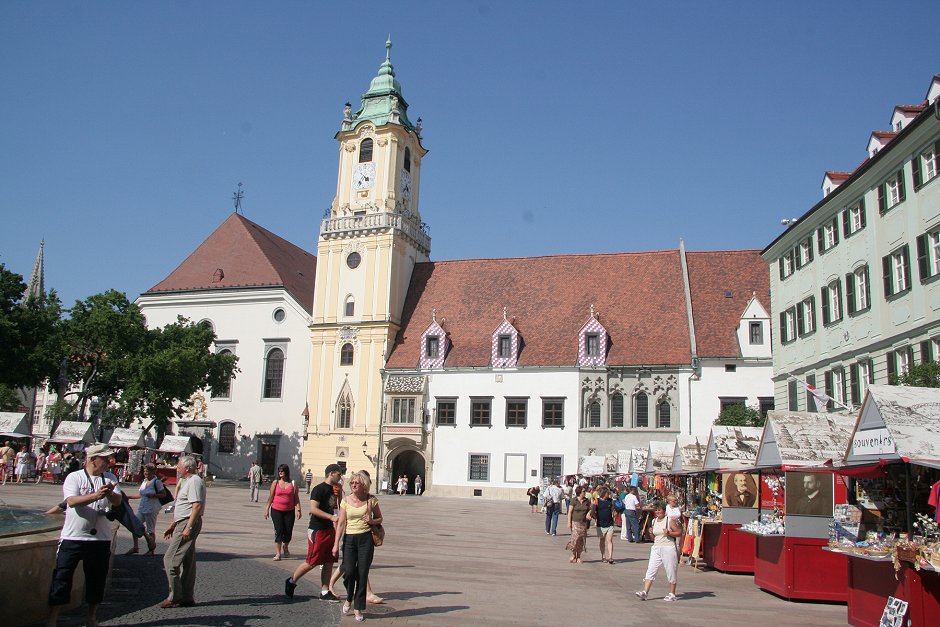 |
| Interior courtyard. |
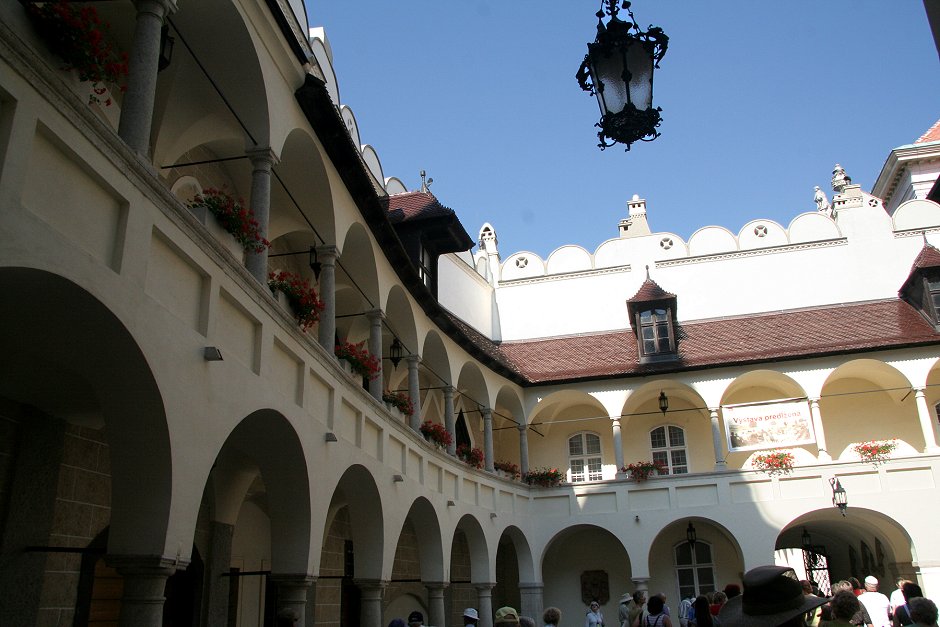 |
| Better view of flowers on the balcony. |
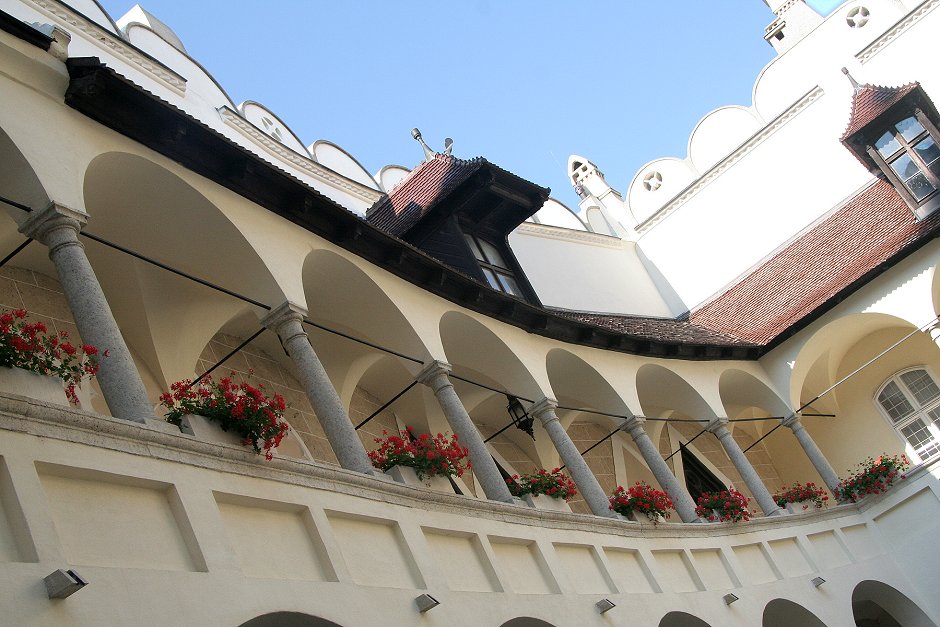 |
| Better still. |
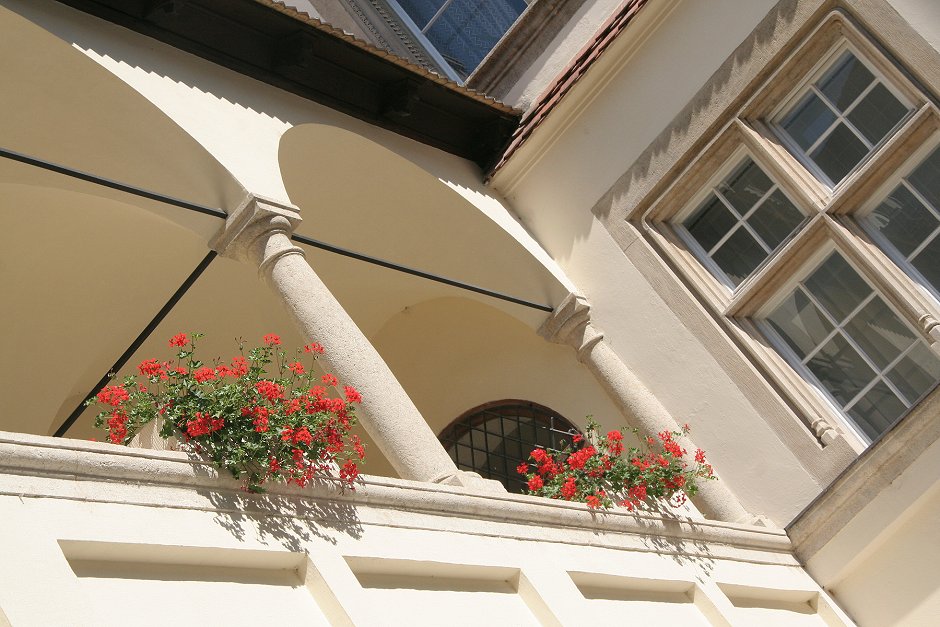 |
| Primate's Palace, nearby. |
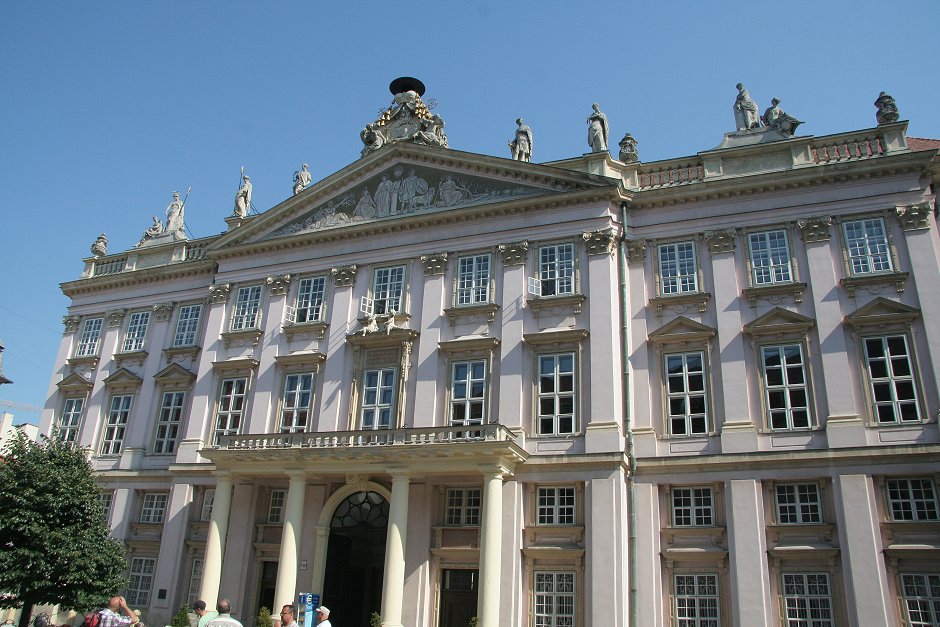 |
This neo-Classical palace was built in 1778-1781 for Archbishop Jozsef Batthyany. During reconstruction (in 1903) a series of six previously unknown tapestries were found behind the wall. The tapestries (1630) show legend of Hero and Leander and their tragic love. The building and its most famous chamber (Hall of Mirrors) have seen many significant events. The most famous of them is the signing of the fourth Peace of Pressburg between Napoleonist France and Francis' Austria (in 1805), which ended War of the Third Coalition. In 1848, Serfdom in the Kingdom of Hungary was cancelled here. |
.
| Primate's Palace, crop into detail at top of building. |
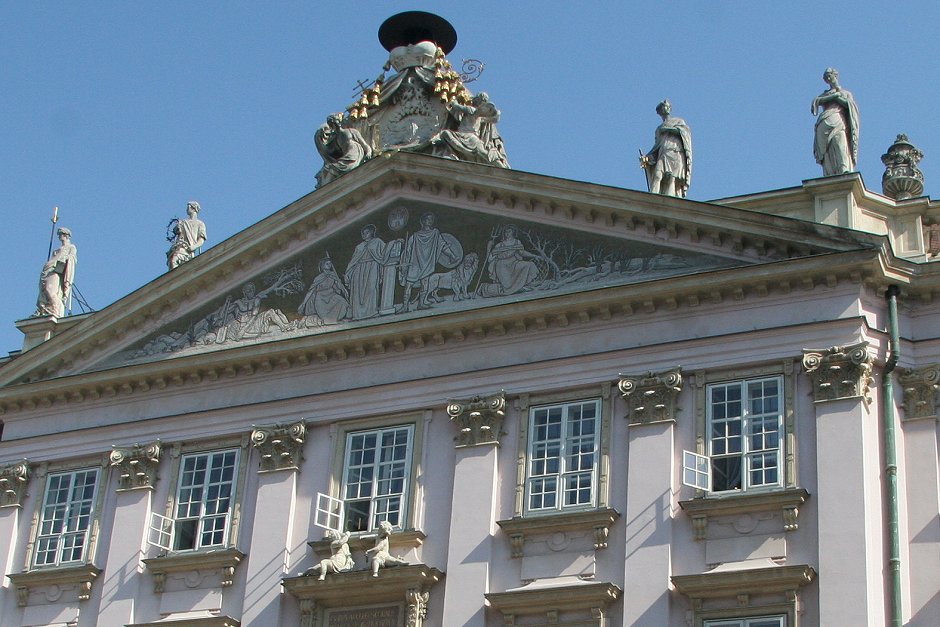 |
| Most people hate this, but I was amused and briefly fooled by this human sculpture. |
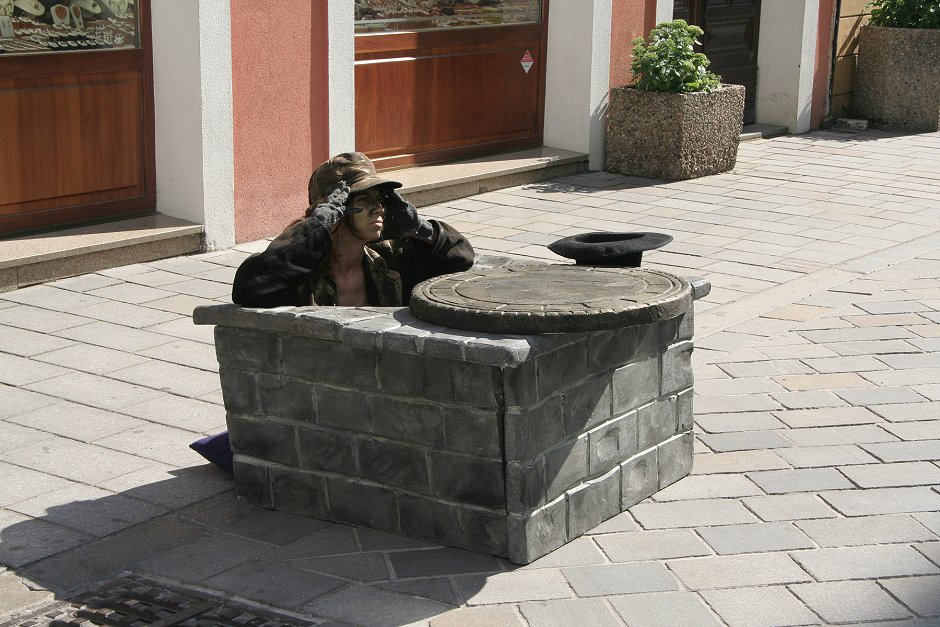 |
| We don't have pretty sewer plumbers like this in Lake Wildwood. |
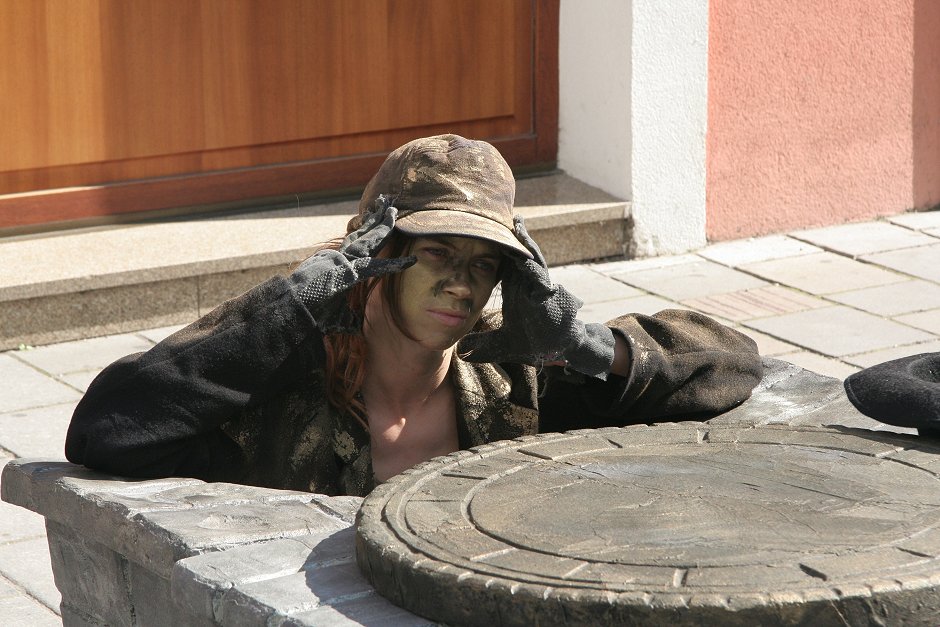 |
Continue to Vienna, Germany |
River Tour Hub Page |
Home
.